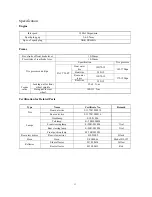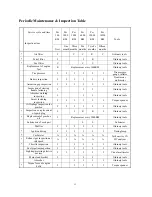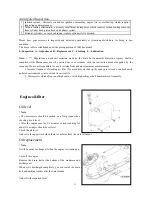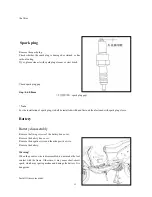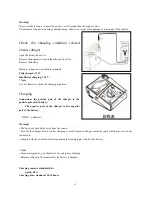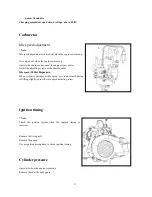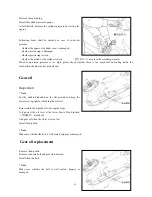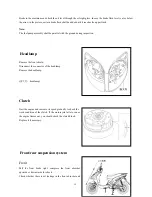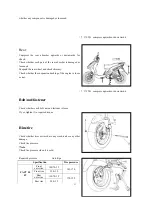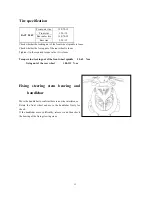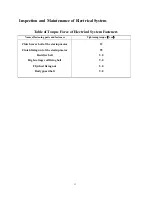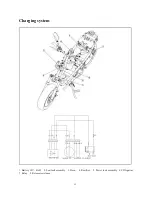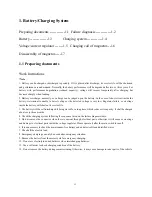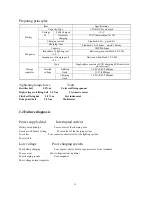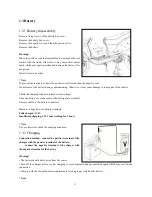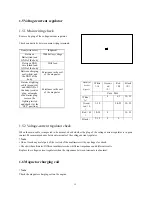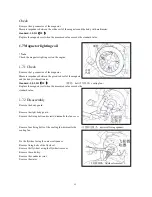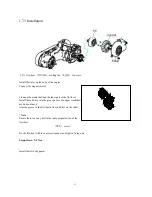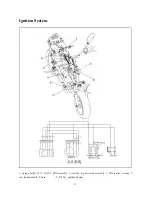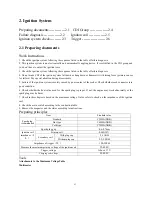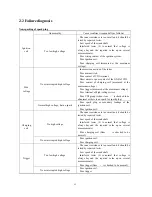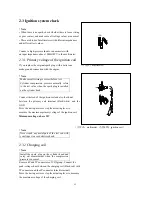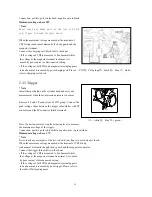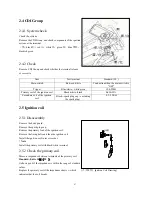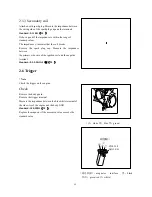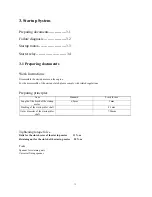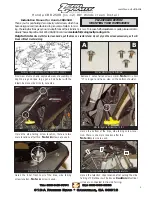
55
1. Battery/Charging System
Preparing documents -------------1.1 Failure diagnosis -------------1.2
Battery ---------------1.3 Charging system -------------1.4
Voltage/current regulator -------1.5 Charging coil of magnetor---1.6
Disassembly of magnetor-----1.7
1.1 Preparing documents
Work Instructions
*Note
1. Battery can be charged or discharged repeatedly. If it is placed after discharge, its service life will be shortened
and performance is undermined. Normally, the battery performance will be degraded after two or three years. For
battery with performance degradation (reduced capacity), voltage will recover temporarily after charging but
decrease sharply when loading.
2. Battery overcharge: normally, overcharge can be judged upon the battery. In the case of short circuit inside the
battery, its terminal is unable to detect voltage or the detected voltage is very low. Regulator failure: overvoltage
inside the battery will shorten its service life.
3. The battery will be self-discharged if being stored for a long time, which reduces its capacity. It shall be charged
about every three months.
4. Check the charging system following the sequence listed on the failure diagnosis table.
5. Do not remove the connector when there is current through electrical parts, otherwise it will cause overvoltage
and damage to electrical parts inside the voltage regulator. Please operate it after the main switch turns off.
6. It is unnecessary to check the maintenance-free battery and add electrolyte and distilled water.
7. Check all the electric load.
8. Emergency charging can only be used under emergency situation.
9. Remove the battery from the motorcycle for emergency charging.
10. Do not use electrolyte-added batteries when interchanging batteries.
11. Use a voltmeter to check charging condition of the battery.
12. Do not remove the battery during commissioning. Otherwise, it may cause damage to inner parts of the vehicle.

